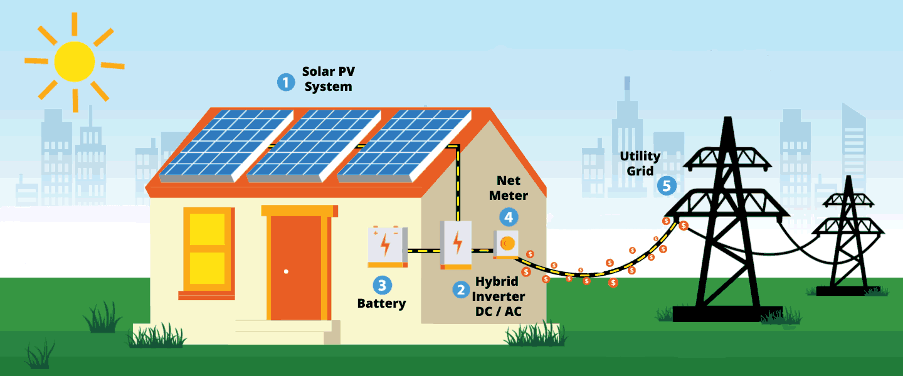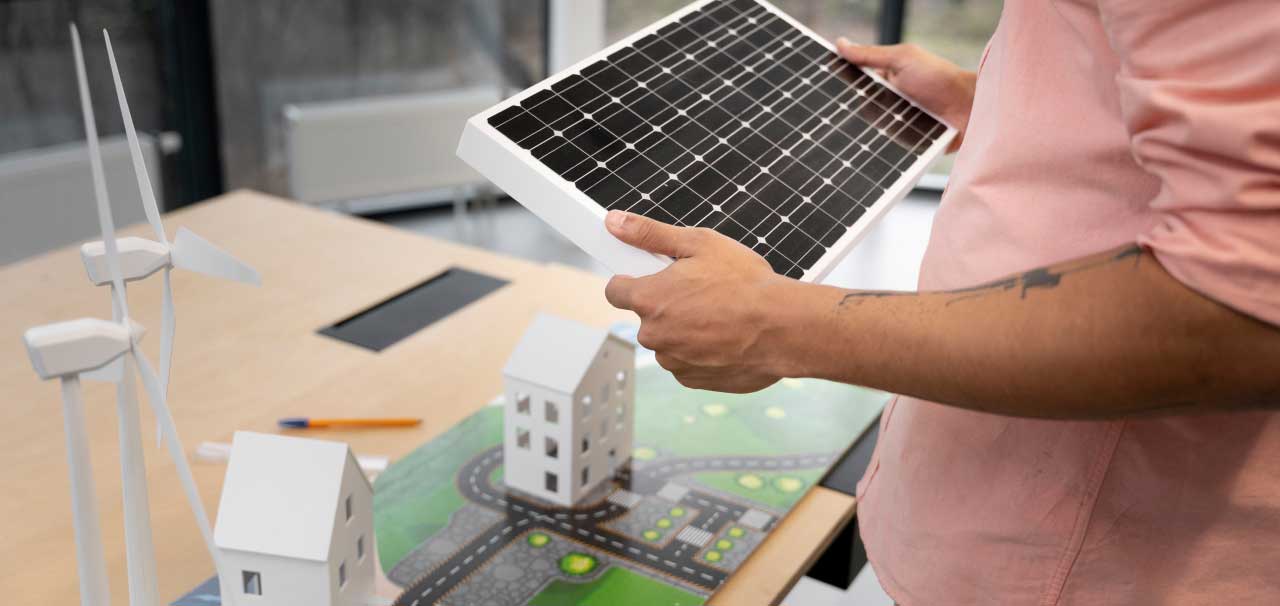The DC electricity flows into a solar inverter that converts it to 240V 50Hz AC electricity.
Now you have 240V electricity that you can use to power appliances in your home.
During the day any surplus electricity your system generates is fed back into the main grid and you can receive a rebate on your power bill. This rebate varies from one electricity company to another so it is best to shop around for the best deal.

Solar system components have been tested and have warranties up to 30 years in the case of some solar panels. So you can expect a long, hassle-free life from your solar power system! Government solar rebates and incentives available mean you can also save thousands on a grid-connect system.
What about at night?
if a grid connects system is producing more power than the home consumes, the surplus is fed into the power grid. Some electricity companies meter the electricity fed into the grid by your system and provide a credit on your bill. How much you are paid is determined by the feed-in tariff.
What do inverters do?
if a grid connects system is producing more power than the home consumes, the surplus is fed into the power grid. Some electricity companies meter the electricity fed into the grid by your system and provide a credit on your bill. How much you are paid is determined by the feed-in tariff.
What about at night?
What is an on-grid solar system?
Your solar installer will aim to install the modules at an angle that ensures that the glass face of the modules is positioned at 90 degrees to the sun for most of the day.
Solar power is generated when energy from the sun (sunlight) is converted into electricity or used to heat air, water, or other fluids. There are two main types of solar energy technologies:
Solar thermal is the conversion of solar radiation into thermal energy (heat). Thermal energy carried by air, water, or other fluid is commonly used directly, for space heating, or to generate electricity using steam and turbines. Solar thermal is commonly used for hot water systems. Solar thermal electricity, also known as concentrating solar power, is typically designed for large scale power generation.
Solar photovoltaic (PV) converts sunlight directly into electricity using photovoltaic cells. PV systems can be installed on rooftops, integrated into building designs and vehicles, or scaled up to megawatt scale power plants. PV systems can also be used in conjunction with concentrating mirrors or lenses for large scale centralised power.
Solar thermal and PV technology can also be combined into a single system that generates both heat and electricity.
Solar thermal and PV technology can also be combined into a single system that generates both heat and electricity.
Contact us for a free quote.
Please send us your inquiry or give us a quick call to
+61 07 3519 5118 for any information.

